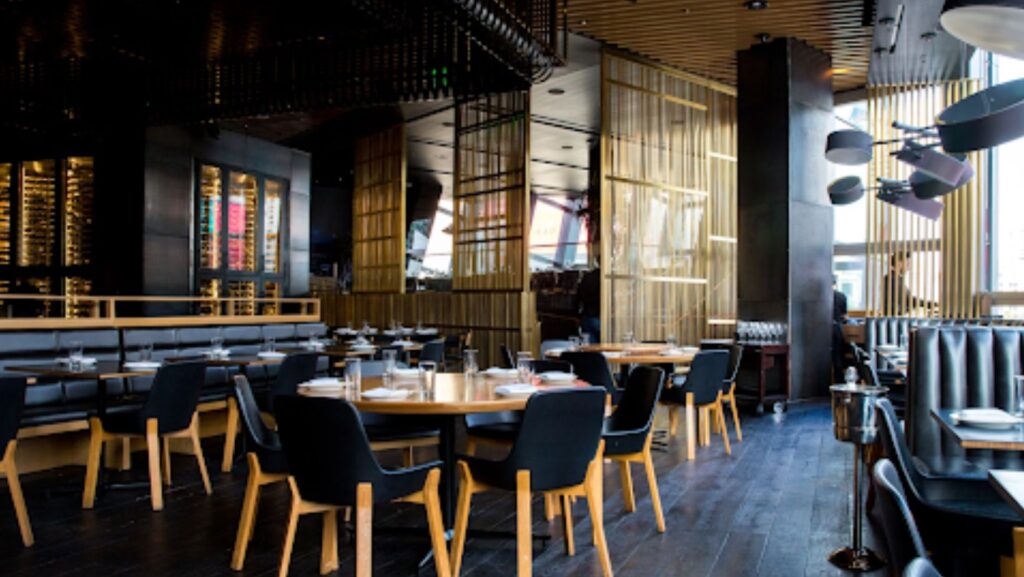Running a restaurant successfully requires balancing customer satisfaction, efficient staff management, and the smooth functioning of day-to-day operations. When operations are streamlined, it can boost productivity, reduce waste, and lead to increased profits. Below are eight actionable tips to help restaurant owners and managers optimize their operations and improve overall efficiency.
Automate Ordering Systems
One of the most significant changes you can make to streamline restaurant operations is adopting an automated ordering system. Traditional manual ordering processes can lead to mistakes, miscommunications, and time inefficiencies. By integrating modern point-of-sale (POS) systems, you can automate orders and track them seamlessly from the kitchen to the front of the house.
Automation allows for accurate inventory tracking and real-time data on customer preferences, helping managers make informed decisions. By investing in a reliable POS system, you can avoid common mistakes and ensure smoother coordination between the kitchen and servers. Moreover, these systems help monitor stock levels and automate reordering when supplies are low, preventing shortages that could halt operations.
Optimize Your Kitchen Layout
The design and layout of your kitchen can have a tremendous impact on how efficiently your staff can operate. A well-organized kitchen minimizes unnecessary movement, reduces the risk of accidents, and enhances communication between chefs and servers. Ensure that your kitchen’s layout is intuitive and easy to navigate, with all essential equipment, such as ovens, refrigerators, and prep stations, placed in strategic locations.
Take the time to assess how your staff works within the space. Are they frequently bumping into each other or reaching over to access utensils and ingredients? If so, rearranging the layout to eliminate bottlenecks can create a more efficient workflow, ultimately speeding up meal prep and service times.
Focus on Regular Maintenance and Cleaning
Maintaining and cleaning equipment regularly is crucial to ensuring restaurant efficiency. Neglecting maintenance can lead to equipment breakdowns, which result in downtime and costly repairs.

Routine checks on critical appliances, such as ovens, dishwashers, and refrigerators, will help prolong their lifespan and reduce the likelihood of unexpected disruptions.
In addition, grease trap maintenance is vital for preventing clogs that can back up your entire kitchen. Clogs lead to slow drainage, health hazards, and potentially expensive repairs. Follow a comprehensive grease trap cleaning guide to ensure that you’re meeting local regulations and keeping your kitchen running smoothly. Scheduling regular cleaning sessions will also help avoid fines or costly emergency plumbing services, ensuring minimal interruptions.
Train and Empower Your Staff
Your restaurant’s staff plays an integral role in maintaining efficiency. Invest in proper training for both new and existing employees to ensure they understand their roles and the restaurant’s operational workflow. Cross-training staff members to handle different tasks during peak hours or emergencies can also improve flexibility and prevent slowdowns.
Empower your staff by encouraging open communication and providing opportunities for feedback. Employees who feel valued and listened to are more likely to perform well, take ownership of their responsibilities, and contribute ideas to improve the overall operations of the restaurant.
Implement Inventory Management Systems
Inventory management can be one of the most challenging aspects of restaurant operations. Improper tracking can lead to waste, overspending, or running out of key ingredients during busy times. Implementing a robust inventory management system allows for real-time monitoring of stock levels and automatic notifications when supplies are low.
A digital inventory system ensures you have the ingredients you need without overstocking, which can lead to spoilage. It also provides insights into purchasing patterns, helping you reduce waste and avoid unnecessary expenses. These systems can be integrated with your POS to further streamline operations and make inventory control a more automated, efficient process.
Streamline Your Menu
A cluttered menu can slow down kitchen operations and overwhelm customers. Streamlining your menu by focusing on dishes that are easy to prepare, popular with customers, and profitable can significantly improve efficiency. When you reduce the number of items, your kitchen staff can focus on preparing fewer dishes with higher quality, and inventory management becomes simpler.
Review your sales data to identify best-sellers and underperforming items. Consider eliminating items that are rarely ordered or are too complex to prepare efficiently. A well-curated menu leads to faster prep times, less waste, and an overall smoother workflow for the kitchen staff.
Optimize Scheduling Based on Data
Scheduling is another critical area where restaurants can either thrive or suffer. Poorly planned schedules can result in overstaffing, which increases labor costs, or understaffing, which causes slow service and customer dissatisfaction. Using data-driven scheduling tools can help you analyze peak business hours and adjust staff levels accordingly.
Consider implementing scheduling software that tracks customer traffic and historical data to predict when you’ll need more staff. This ensures that you always have the right number of employees on hand, whether it’s a busy Friday night or a quiet weekday afternoon. Optimized scheduling improves labor efficiency, ensures smooth service, and reduces unnecessary costs.
Utilize Data Analytics to Drive Decisions
One of the most powerful tools for improving restaurant efficiency is data analytics. By using data to track performance metrics, customer preferences, and operational bottlenecks, you can make more informed decisions. Data analytics can reveal trends such as peak hours, best-selling menu items, and even the effectiveness of marketing campaigns.
In addition to improving day-to-day operations, analytics can help with long-term planning and growth strategies. Whether you’re considering expanding your menu, opening a new location, or making changes to staffing levels, data can provide insights that lead to more effective, streamlined decisions. Investing in analytics tools tailored to the restaurant industry will give you a competitive edge and improve efficiency across the board.

Streamlining restaurant operations is essential for maintaining profitability, improving customer service, and ensuring long-term success. By adopting automation, optimizing kitchen layout, and focusing on regular maintenance, you can prevent costly disruptions. Empowering your staff through training, utilizing inventory and data management systems, and simplifying your menu further enhance efficiency. When all these elements work together, your restaurant can run smoothly, reduce waste, and meet customer expectations. Continuous improvement in operations not only boosts productivity but also creates a positive environment for both staff and patrons, ensuring your restaurant thrives in a competitive market.



